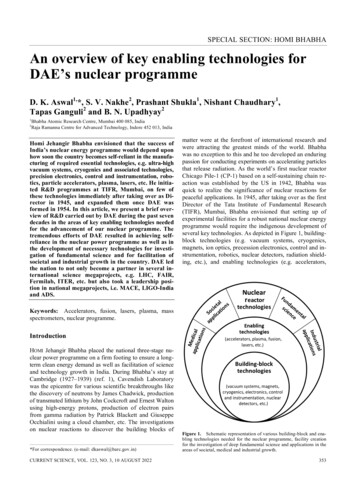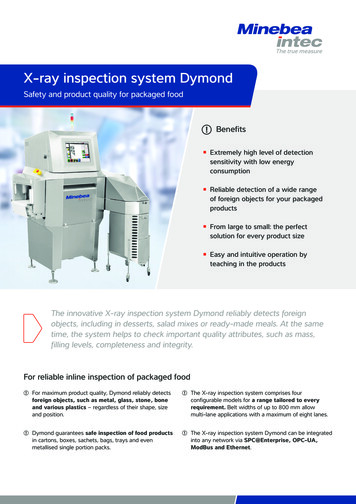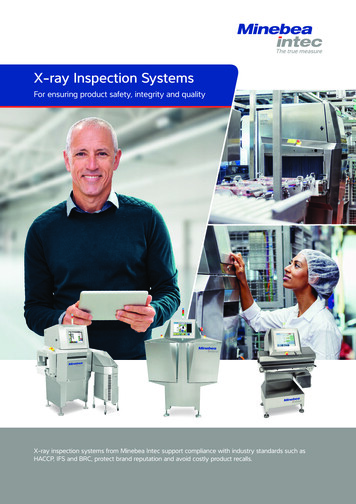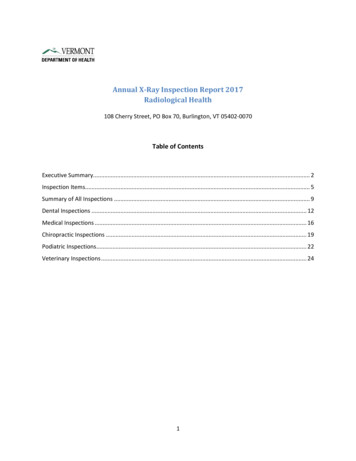
Transcription
Annual X-Ray Inspection Report 2017Radiological Health108 Cherry Street, PO Box 70, Burlington, VT 05402-0070Table of ContentsExecutive Summary. 2Inspection Items. 5Summary of All Inspections . 9Dental Inspections . 12Medical Inspections . 16Chiropractic Inspections . 19Podiatric Inspections. 22Veterinary Inspections . 241
Executive SummaryThe Vermont Department of Health performs radiation inspections of facilities around the state thatown x-ray equipment. These inspections are performed at different intervals depending on the type offacility. The National Council on Radiation Protection and Measurements (NCRP) recommends thatmedical facilities, including chiropractic facilities, be inspected every two years. Dental and veterinaryfacilities are recommended to be inspected every four years. Because podiatric x-ray machines aresimilar to dental units, podiatric facilities are also inspected every four years.A total of 104 x-ray facilities were inspected in 2017. Out of the 104 facilities, 77 (74%) were in fullcompliance at the time of the inspection. Twenty-one (78%) of those facilities that were not incompliance came into compliance after the inspection. Overall, 98 out of the 104 facilities (94%) were incompliance thirty days after the inspection. Noncompliance items can be related either to the facility(such as film processing and patient shielding) or to radiographic issues (such as patient or publicexposure and the condition of the x-ray unit).The main area of concern in 2017 is the lack of review of personnel monitoring records. Facilities arerequired to provide personnel dose monitoring unless it can be demonstrated that employees willreceive less than 10% of the maximum occupational dose limit. Facilities that provide dosimeters tomonitor employees’ radiation doses are also required to review the monitoring results with theseemployees on a periodic basis. The monitoring of dose levels is necessary to ensure that all personnelare taking steps to reduce dose. Another area of concern is the lack of satisfactory lead aprons. Whilelead aprons were available in all of the facilities inspected, some were cracked or torn, while otherswere stored improperly. Other non-compliance items are listed on pages 5 to 8.Annual dose rates to x-ray equipment operators at the facilities inspected were less than the Vermontmaximum allowed limit of 5000 millirem and most were less than 1% of this limit. Annual dose rates tothe public were less than the maximum allowed limit of 100 millirem at all inspected facilities.Radiation doses to patients were less than the Vermont maximum allowed doses for all facilities. Pleaserefer to the charts for each type of facility (“Dose to Patients per Exposure”). Vermont recommendeddoses and NCRP Diagnostic Reference Levels (DRL’s) are shown for comparison and as goals for allfacilities. DRL’s are guides for reducing radiation dose while maintaining or improving image quality andare not intended to serve as regulatory limits.The dose to the patient and the operator is less for x-ray facilities that use faster speed film or digitalimaging. For example, as the speed of dental intra-oral film increases from “D” to “F,” the average doseper exposure decreases from 0.41 to 0.30 millirem. The use of digital x-ray instead of film decreases theaverage dose per exposure from 0.30 millirem for “F” speed film to 0.17 millirem for direct digital x-rays.As more digital x-ray systems are used we should see decreases in the total facility noncompliances asdarkrooms, safelights, film, and processing are no longer needed. Approximately 85% of dental, 89% ofveterinary, 97% of medical, 56% of podiatric, and 61% of chiropractic facilities in Vermont are usingdigital x-ray. Eighty-five percent of all facilities are now using digital x-ray.2
Percentage of Facilities That are ryPercentage of Facilities in Compliance1201008060402002009201020112012In Compliance Before Inspection20132014201520162017In Compliance After InspectionExposures to the operator and to the public are measured at the configuration of highest exposure.Operator exposures are measured at the position the operator stands when making the exposure, asindicated by the facility. Exposure to the public is measured at the doorway while aiming the x-ray tubeout of the exam room door (if possible) from approximately the patient position for an x-ray exam.Operator and public exposures are measured in milliroentgen per hour using a Fluke 451B ion chamber.The exposure per hour is converted to annual dose in millirem using the number of x-rays the facilitytakes within a given time period. One milliroentgen is equal to 0.5 millirem (American National StandardInstitute 6.1.1-1991) for whole body exposure from scattered radiation for operators and the public.Patient entrance skin exposures (ESE’s) are measured in milliroentgen using a RaySafe X2 detector, thenconverted to millirem using the factors in the following table based on the organ of greatest risk.Multiplication of the factor by the number of milliroentgen per exam results in the dose in millirem.3
Exam TypeDentalPA (posteroanterior) ChestAP (anteroposterior) Cervical SpineAP Thoracic SpineAP Lumbar SpineAP AbdomenAP RetrogradeLateral SkullHandWristArmShoulderLegKneeAnkleDP (dorsal-plantar) FootLateral stomach/colonstomach/colonbrainskinskinbone marrowbone marrowbone marrowbone marrowskinskinskinAdapted from National Council on Radiation Protection and Measurements ReportNo. 116 tissue weighting factors and conversion factor from roentgen to rad of0.87 rad/roentgen.The average radiation dose to a member of the U.S. population from both natural and man-madesources is 620 millirem per year, according to the National Council on Radiation Protection andMeasurements (NCRP). On average, about 300 millirem is from medical uses of radiation.Radiation Exposure in the U.S.in mrem per year(Total of 620 mrem/year)RadonInternal Emitters43 0.6CosmicTerrestrial230148Medical X-rayNuclear Medicine12Consumer Products75Computed Tomography3119 3131Interventional FluoroscopyOccupational/IndustrialAdapted from NCRP Report No. 160, 2009, Ionizing Radiation Exposures of the Population of the United States.4
Inspection ItemsThe following boxed sections indicate the individual items that are specifically checked during aninspection, divided into twelve general groups: the facility items of film/screen, processing,darkroom/safelight, personnel monitoring, and patient shielding; and the radiographic items ofcollimation, timer, kVp and filtration, patient entrance skin exposure criteria, public exposure criteria,operator conditions, and physical condition (of x-ray unit, shielding, etc.). These inspection items aredrawn primarily from the National Council on Radiation Protection and Measurements (NCRP).Some inspection items may pertain only to specific types of facilities. For example, lead gloves tend tobe needed primarily while holding animals at veterinary facilities, while panoramic units are found onlyin dental facilities. Other inspection items apply to all facilities, such as public exposure limits.New facilities are not cited for non-compliant items, but are allowed a period of approximately onemonth to correct any non-compliant items found in the initial inspection.Facility Noncompliance ItemsFilm/ScreenDental film is less than E speedX-ray film speed is less than 400Film is not protected from scatter radiationFilm is not stored properlyFilm is exposed to chemicalsOut of date film is usedFilm and screen types not matchedNo screen installation date is on outside of cassetteScreen and cassettes are not of the same type or ageScreen cleaning interval is inadequateScreen cleaning solution and lint-free wipes are not used per manufacturerinstructionsCassette check is inadequateCassettes are not permanently identified for their type of useFilm viewbox is not availableFilm viewbox is not cleaned periodicallyViewbox bulbs are not of the same intensity and colorLuminance of viewboxes is not similarViewbox bulbs are not replaced annuallyTechnique factors are not recorded in the patient log bookLeft/right markers are not used on clinical radiographsClinical radiographs are not properly identified5
Film ProcessingDarkroom/SafelightPersonnel MonitoringPersonnel/PatientShieldingThermometer is not available for manual processingTimer is not available for manual processingFloating cover is not present for manual processingSight development is usedNo evidence of daily log is keptDeveloping technique recommended by the manufacturer is not usedDeveloper and fixer temperature are not maintained in limitsProcessor cleaning interval is inadequateProcessor is not operating properlyProcessor cleaning date is not recordedClean-up film for processing x-ray films (except intra-oral) is not runSafelight bulb is greater than 15 wattsSafelight is too close to the work areaLight leaks are detected in the safelight housingLight leaks are detected in the safelight lensSafelight is improperly filteredDarkroom is not light tightDarkroom is not free of dust and dirtDaylight processor arm cuffs are not acceptableDaylight processor is not light tightDarkroom temperature and/or humidity are not acceptableOther light sources are present in the dark roomPersonnel monitoring devices are required but not availableControl dosimeters are not properly used or storedEmployee dosimeters are not properly usedEmployee dosimeters are not properly storedNo evidence of employee review of recordsPersonnel monitoring records are incompleteNo radiation safety officer is designated for large practicesEvidence of personnel holding film during exposureSatisfactory lead aprons are unavailableSatisfactory thyroid shields are unavailableSatisfactory gonadal shields are unavailableLead aprons are improperly storedLead aprons are not checked for tears and holes (radiographically or visually) onat least an annual basisIndividuals (e.g parents/guardians) holding patients are not protectedNo documentation of LMP (last menstrual period)Repeat rate analysis is not performedMobile equipment exposure switch cord is less than 6 feet longNon-essential individuals are in the x-ray room during exposure6
Radiographic Noncompliance ItemsX-ray beam is not restricted to the appropriate areaCollimationX-ray beam is not restricted to the appropriate sizeCollimator light is not aligned with the x-ray fieldCollimation is not used in taking radiographsCollimator light is not bright enough under normal room lightingCollimator light problems (e.g. mirror broken, mirror obstructed)Inadequate collimation is used for clinical radiographsTimer does not terminate exposureTimerTimer activates at zeroTimer is inaccurateTimer repeatability is unacceptableNo deadman switch is availablekVp is greater than 10% of set valuekVp and FiltrationkVp repeatability is unacceptableDental intra-oral x-ray is operating at less than 50 kVp or greater than 100 kVpFiltration in beam is less than requiredTechnique charts are not available or up to dateMaximum ESEC in milliroentgen for the following non-specialty radiographic examsPatient Entrance Skinshall not be exceeded when technical factors for an average adult are utilized:Exposure Criteria(ESEC)ExaminationPA ChestAP Cervical SpineAP Thoracic SpineAP Lumbar SpineAP AbdomenAP Retrograde PyelogramLateral SkullDental (bitewing/periapical)Public ExposureESEC mRmaximum302509001000750900300700ESEC mRrecommended15175600675500600200350Technique factors are not adjusted for minimum patient exposureESE for all x-ray units in facility are not within 20% of one anotherTypical exposure value for the x-ray unit is not postedESEC repeatability is greater than 5%Public exposure limit of 100 millirem per year exceededPublic is not protected from scatter radiation7Body partthickness (cm)23132323232315N/A
Operator ConditionsPhysical Condition (x-rayunit, shielding, etc.)Operator exposure limit of 5000 millirem per year exceededOperator cannot observe patient during exposureOperator cannot monitor kVp, mA, time, mAs during exposureOperator is not protected during exposureSatisfactory lead gloves are not availableMobile or stationary exposure switch cord is less than 6 feet longExposure switch not located to prevent x-ray activation when operator isoutside of the control boothUntrained personnel are operating the x-ray machinesIndividuals less than 18 years old are holding animals and/or film assemblyVeterinary operator holds x-ray tube during exposureSingle console for multiple tubes does not indicate energized tubePanoramic or 3D unit does not reset before restartingMotion of panoramic or 3D unit is not smooth or is impededX-ray tube head locks into position for panoramic, cephalometric or 3D unitTable locks, tube crane locks, bucky-cassette locks are not functioningFilters for soft tissue imaging for cephalometric imaging are not availableFocal spot is not indicated on the x-ray tubeSource to image distance is less than 7 7/8 inches for intra-oral x-ray tubesSource to image distance is less than 40 inches for medical and stationaryveterinary x-ray machinesUnit is inaccurate/not calibrated in terms of examination distance (source toimage and source to skin distances)Tube head is unstable (drifts or bounces)Overhead crane does not move easilyExposure switch is not labeledUnit does not have visual indication of kVp, mA, time or mAsUnit does not have audible/visual indication of exposureAngulation indicator on x-ray unit is not functioningStructural shielding is inadequateDoor interlock system is not functioningCondition of high voltage and other cables is inadequateX-ray head leaks oilWires are exposed on tube headX-ray exposure button is missing or brokenWires are exposed on exposure switchPreventive maintenance records for x-ray machines and processor are not keptNo FDA or manufacturer label on the x-ray machineMechanical restraints/anesthesia/lead gloves not used for animalsX-ray warning signs not used during portable veterinary useBare sheet lead on walls/doors is not coveredX-ray unit is not registeredVermont State licenses are not displayed8
Summary of All InspectionsTotal Number of Inspections PerformedTotal Number of Facilities Not in Compliance10427Total NoncompliancesAverage noncompliances per noncompliant facilityRange of number of noncompliances per facilityFacility ghtPersonnel MonitoringPatient ShieldingLicense Not DisplayedRepeat Analysis Not PerformedTotal Facility Noncompliances411.520-5Percentage of Total Facility 031PercentPercent of Total Facility personnel monitoringpatient shieldingrepeat analysis not performedlicense not displayed92017
Radiographic NoncompliancesCollimationTimerkVp & FiltrationPatient entrance skin exposurePublic exposureOperator conditionsPhysical condition (x-ray unit, shielding)Unit not registeredTotal Radiographic NoncompliancesPercentage of Total Radiographic 120012210Percent of Total Radiographic 132014201520162017YearcollimationtimerkVp & filtrationoperator conditionsphysical conditionspatient ESEpublic exposureunit not registeredAnnual Dose to Occupational WorkerType of nary1Averagemilliremper year1.3340.020.0716Rangemilliremper year0.0002 - 270.002 - 1030.0002 - 0.070.002 - 0.150.00009 - 5551MaximumAllowablemillirem per year50005000500050005000The wide range in doses for dental, medical, and veterinary facilities reflects the variety of machine types and examinationsperformed in these facilities.10
Annual Dose to PublicType of ary1Averagemilliremper year3.30.0010.230.033.0Rangemilliremper year0.009 - 660.00004 - 0.0020.0001 – 0.80.01 - 0.060.000003 - 731MaximumAllowablemillirem per year100100100100100The wide range in doses for dental and veterinary facilities reflects the variety of machine types and examinations performedin these facilities.11
Dental InspectionsTotal Number of Inspections PerformedTotal Number of Facilities Not in Compliance648Total NoncompliancesAverage noncompliances per noncompliant facilityRange of number of noncompliances per facilityFacility ghtPersonnel MonitoringPatient ShieldingTotal Facility Noncompliances121.50-3Percentage of Total Facility t of Total Dental Facility ient shieldingprocessingpersonnel monitoring122017
Radiographic NoncompliancesCollimationTimerkVp & FiltrationPatient entrance skin exposurePublic exposureOperator conditionsPhysical condition (x-ray unit, shielding)Unit not registeredTotal Radiographic NoncompliancesPercentage of Total Radiographic 01124Percent of Total Dental 10201120122013201420152016YeartimerkVp & filtrationoperator conditionsphysical conditionspatient ESEpublic exposureunit not registeredcollimation132017
Dose to Patients per ExposureExam TypeIntra-oral D speed filmIntra-oral E speed filmIntra-oral F speed filmIntra-oral Portable digitalIntra-oral CR digitalIntra-oral DR digitalPanoramic filmPanoramic digitalCephalometricCephalometric digitalCephalometric scanner3 DimensionalAveragemilliremper 190.75Rangemilliremper exposureNANA0.16 - 0.580.09 - 0.210.07 - 0.210.04 - 0.700.30 - 0.980.35 - 1.350.02 - 0.740.13 - 0.430.18 - 0.200.30 - 1.61Vermont statemaximum t staterecommendeddose dfrom the Radiological Health Rule Part 5. Chapter 3. regulations maximum entrance skin exposure criteria of 700milliroentgens per radiograph, so (700 x 0.0015) for the brain as the organ of greatest risk.2Calculated from the Radiological Health Rule Part 5. Chapter 3. regulations recommended entrance skin exposure criteria of350 milliroentgens per radiograph, so (350 x 0.0015) for the brain as the organ of greatest risk.3DRL Diagnostic Reference Level (derived from NEXT data) adjusted to millirem, NCRP Report 145, 20034NA Not applicableAnnual Dose to Occupational WorkerExam TypeIntra-oral D speed filmIntra-oral E speed filmIntra-oral F speed filmIntra-oral Portable digitalIntra-oral CR digitalIntra-oral DR digitalPanoramic filmPanoramic digitalCephalometricCephalometric digitalCephalometric scanner3 DimensionalAveragemilliremper milliremper yearNANA0.005 - 7.50.83 - 150.02 - 140.0005 - 150.03 - 5.10.002 - 130.009 - 1.50.0002 - 3.44.9 - 100.0003 - 2714MaximumAllowablemillirem per .0240.024--
Annual Dose to PublicExam TypeIntra-oral D speed filmIntra-oral E speed filmIntra-oral F speed filmIntra-oral Portable digitalIntra-oral CR digitalIntra-oral DR digitalPanoramic filmPanoramic digitalCephalometricCephalometric digitalCephalometric scanner3 DimensionalAveragemilliremper remper yearNANA0.17 - 6.90.05 - 5.20.48 - 220.02 - 220.02 - 6.00.01 - 660.02 - 310.48 - 9.49.3 - 120.009 - 23MaximumAllowablemillirem per year100100100100100100100100100100100100
Medical InspectionsTotal Number of Inspections PerformedTotal Number of Facilities Not in Compliance31Total NoncompliancesAverage noncompliances per noncompliant facilityRange of number of noncompliances per facilityFacility ghtPersonnel MonitoringPatient ShieldingTotal Facility Noncompliances110-1Percentage of Total Facility Noncompliances0.00.00.0100.00.0100.0000100Percent of Total Medical sonnel monitoringpatient shieldingdarkroom/safelight162017
Radiographic NoncompliancesCollimationTimerkVp & FiltrationPatient entrance skin exposurePublic exposureOperator conditionsPhysical condition (x-ray unit, shielding)Unit not registeredTotal Radiographic NoncompliancesPercentage of Total Radiographic 00Percent of Total Medical 10201120122013201420152016YearcollimationkVp & filtrationphysical conditionspatient ESEpublic exposureunit not registeredtimeroperator conditions172017
Dose to Patients per ExposureType of ExamPA ChestAP Cervical SpineAP Thoracic SpineAP Lumbar SpineAP AbdomenAP RetrogradeLateral SkullHandWristArmShoulderLegKneeAnkleDP FootLateral FootFluoroscopyArmKneeAnkleAP CervicalAP LumbarFluoroscopy Spot FilmSinusAveragemilliremper milliremper exposureNA4NANA42 - 46NANANANA0.05 - 0.06NANANANANANANAVermont statemaximum -----Vermont staterecommendeddose edfrom the Radiological Health Rule Part 5. Chapter 3. regulations maximum entrance skin exposure criteria perradiographExample: For a PA chest exam the lung is the organ of greatest risk so the maximum dose would be (30 x 0.1044) millirem.2Calculated from the Radiological Health Rule Part 5. Chapter 3. regulations recommended entrance skin exposure criteria perradiographExample: For a PA chest exam the lung is the organ of greatest risk so the recommended dose would be (15 x 0.1044) millirem.3DRL4NA Diagnostic Reference Level (derived from NEXT data) adjusted to millirem, NCRP Report 172, 2012 not applicableAnnual Dose to Occupational WorkerAveragemilliremper year34Rangemilliremper year0.002 - 103Annual Dose to PublicMaximumAllowablemillirem per year5000Averagemilliremper year0.00118Rangemilliremper year0.00004 - 0.002MaximumAllowablemillirem per year100
Chiropractic InspectionsTotal Number of Inspections PerformedTotal Number of Facilities Not in Compliance94Total NoncompliancesAverage noncompliances per noncompliant facilityRange of number of noncompliances per facilityFacility ghtPersonnel MonitoringPatient ShieldingLicense DisplayedRepeat AnalysisTotal Facility Noncompliances51.250-2Percentage of Total Facility PercentPercent of Total Chiropractic afelightpersonnel monitoringpatient shieldingrepeat analysis not performedlicense not displayed192017
Radiographic NoncompliancesCollimationTimerkVp & FiltrationPatient entrance skin exposurePublic exposureOperator conditionsPhysical condition (x-ray unit, shielding)Unit not registeredTotal Radiographic NoncompliancesPercentage of Total Radiographic 00PercentPercent of Total Chiropractic r conditionsphysical conditionspatient ESEpublic exposureunit not registeredkVp & filtrationDose to Patients per ExposureType of ExamPA ChestAP Cervical SpineAP Thoracic SpineAP Lumbar SpineAP AbdomenAP RetrogradeLateral SkullAveragemilliremper exposureNA42.82540NANANARangemilliremper exposureNA0.87 - 5.318 - 4813 - 74NANANA1CalculatedVermont statemaximum nt staterecommendeddose lirem31.8--5041---from the Radiological Health Rule Part 5. Chapter 3. regulations maximum entrance skin exposure criteria perradiographExample: For a PA chest exam the lung is the organ of greatest risk so maximum dose would be (30 x 0.1044) millirem.2Calculated from the Radiological Health Rule Part 5. Chapter 3. regulations recommended entrance skin exposure criteriaper radiographExample: For a PA chest exam the lung is the organ of greatest risk so recommended dose would be (15 x 0.1044) millirem.3DRL Diagnostic Reference Level (derived from NEXT data) adjusted to millirem, NCRP Report 172, 20124NA not applicable20
Annual Dose to Occupational WorkerAveragemilliremper year0.02Rangemilliremper year0.0002 - 0.07MaximumAllowablemillirem per year5000Annual Dose to PublicAveragemilliremper year0.23Rangemilliremper year0.0001 - 0.8MaximumAllowablemillirem per year10021
Podiatric InspectionsTotal Number of Inspections PerformedTotal Number of Facilities Not in Compliance31Total NoncompliancesAverage noncompliances per noncompliant facilityRange of number of noncompliances per facilityFacility ghtPersonnel MonitoringPatient ShieldingTotal Facility Noncompliances110-1Percentage of Total Facility Noncompliances0.00.0100.00.00.0100.0001000Percent of Total Podiatric gdarkroom/safelightpatient shieldinglicense not displayedpersonnel monitoring22
Radiographic NoncompliancesCollimationTimerkVp & FiltrationPatient entrance skin exposurePublic exposureOperator conditionsPhysical condition (x-ray unit, shielding)Unit not registeredTotal Radiographic NoncompliancesPercentage of Total Radiographic 00Percent of Total Podiatric 102011201220132014201520162017YearkVp & filtrationphysical conditionsoperator conditionspatient ESEpublic exposureunit not registeredcollimationtimerDose to Patients per ExposureAveragemilliremper exposure0.220.28Type of ExamDP FootLateral FootRangemilliremper exposure0.14 - 0.300.25 - 0.33Annual Dose to Occupational WorkerAveragemilliremper year0.06Rangemilliremper year0.002 - 0.15Vermont statemaximum dosemillirem---Vermont staterecommendeddose millirem---NCRPDRLmillirem---Annual Dose to PublicMaximumAllowablemillirem per year5000Averagemilliremper year0.0323Rangemilliremper year0.01 - 0.06MaximumAllowablemillirem per year100
Veterinary InspectionsTotal Number of Inspections PerformedTotal Number of Facilities Not in Compliance2513Total NoncompliancesAverage number noncompliances per noncompliant facilityRange of number of noncompliances per facilityFacility ghtPersonnel MonitoringPersonnel ShieldingTotal Facility Noncompliances221.690-5Percentage of Total Facility nt of Total Veterinary gdarkroom/safelightpersonnel monitoringpersonnel shieldinglicense not displayed24
Radiographic NoncompliancesCollimationTimerkVp & FiltrationPatient entrance skin exposurePublic exposureOperator conditionsPhysical condition (x-ray unit, shielding)Unit not registeredTotal Radiographic NoncompliancesPercentage of Total Radiographic 000106Percent of Total Veterinary 10201120122013201420152016YearcollimationtimerkVp & filtrationoperator conditionsphysical conditionspatient ESEpublic exposureunit not registered252017
Exposure to Patient per ExposureType of ExamDog chestDog abdomenDog extremityDog dentalDog CT scanCat-o-gramCat chest/abdomenCat extremityCat dentalHorse hoofHorse navicularHorse fetlock/pastern/ankleHorse carpus/kneeHorse hockHorse gaskin/forearmHorse canonHorse stifle/hipHorse spine1NAAverageRangemilliroentgen milliroentgenper exposure per exposure549.9 - 139648.1 - 163182.4 - 719242 - 242NA1NA282.9 - 52305.8 - 76142.8 - 406926 - 138NANA363.0 - 894016 - 64NANA304.4 - 64NANANANA668.1 - 141213NA not applicableAnnual Dose to Occupational WorkerStationary X-RayPosition of OperatorOperator exposure at edge of tableOperator exposure at opposite ends of tableOperator exposure 3 feet from x-ray unitOperator exposure 6 feet from x-ray unitOperator exposure behind shield, wall, or doorExtremity exposureAveragemilliremper year21116.81.70.0989Rangemilliremper year0.35 - 830.14 - 500.04 - 420.01 - 170.00009 – 0.842.2 - 667MaximumAllow
facilities are recommended to be inspected every four years. Because podiatric x-ray machines are similar to dental units, podiatric facilities are also inspected every four years. A total of 104 x-ray facilities were inspected in 2017. Out of the 104 facilities, 77 (74%) were in full compliance at the time of the inspection.
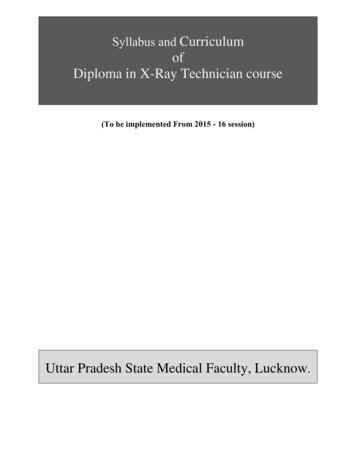
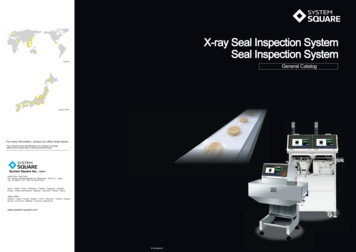
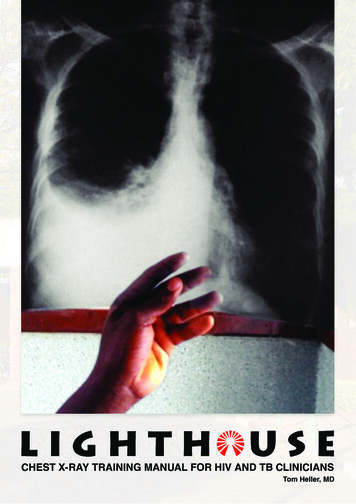
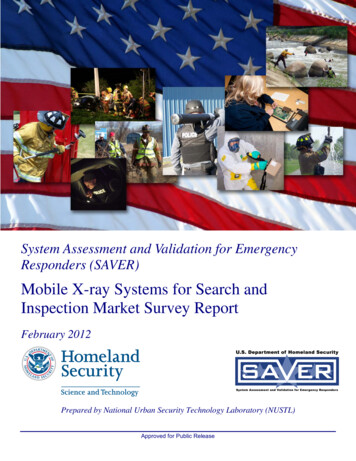
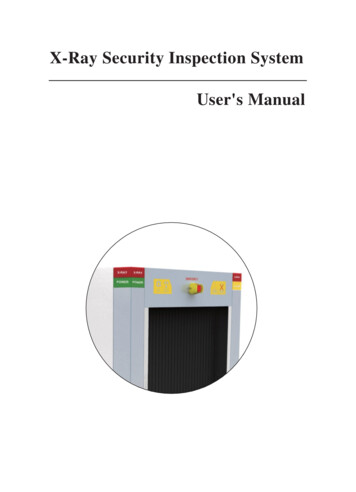
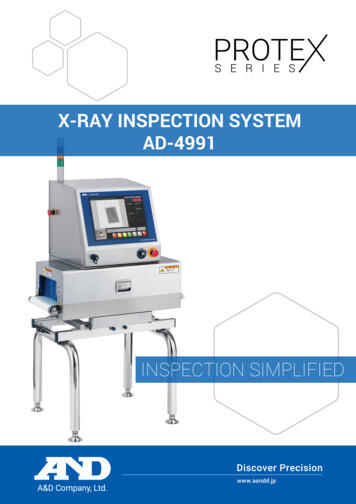
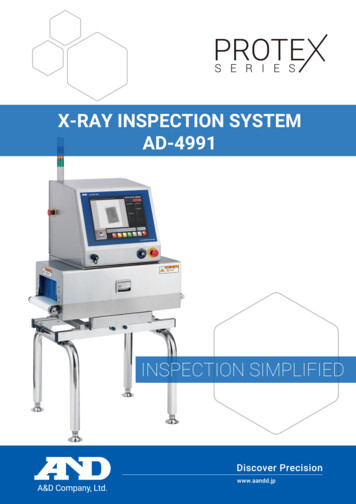
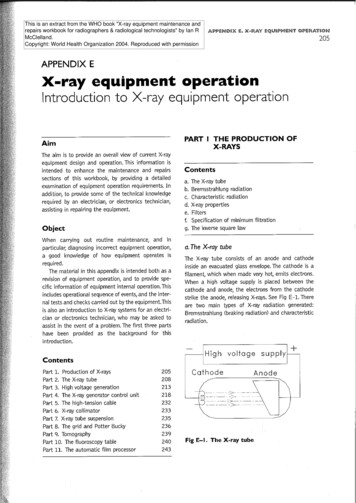
![[AWS Black Belt Online Seminar] AWS X-Ray](/img/17/20200526-blackbelt-x-ray.jpg)
